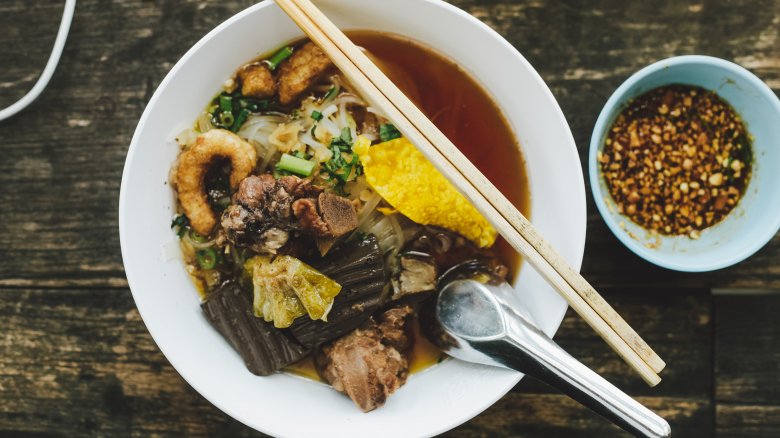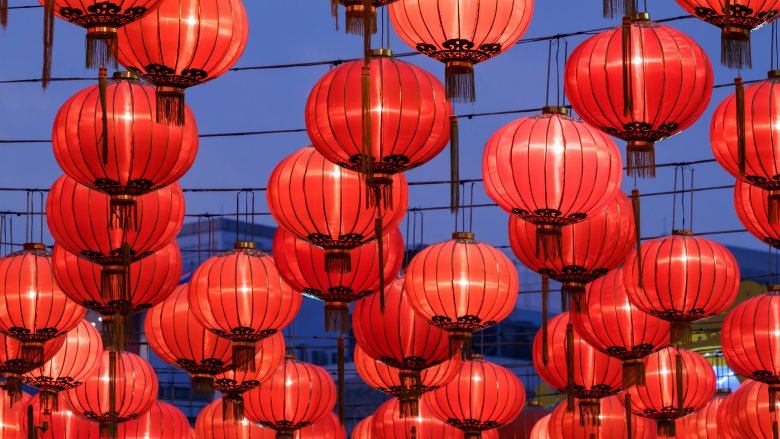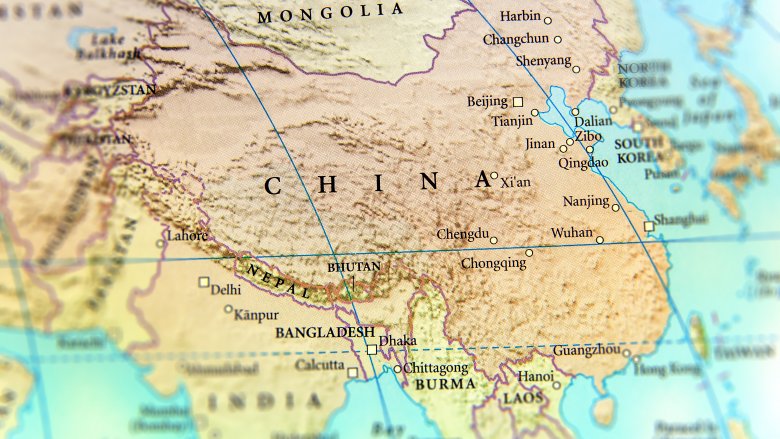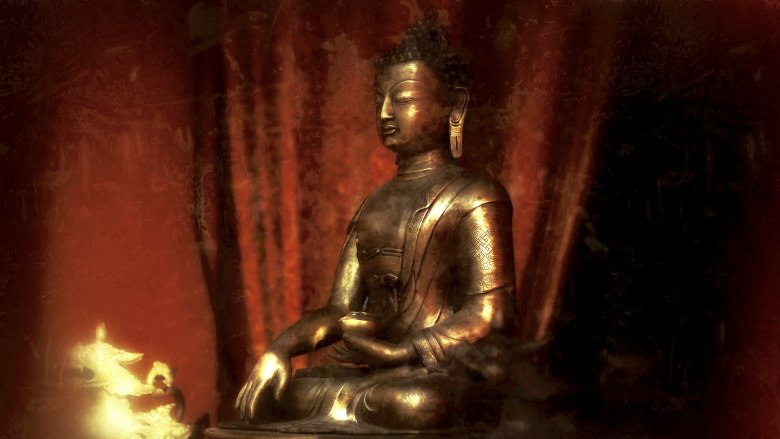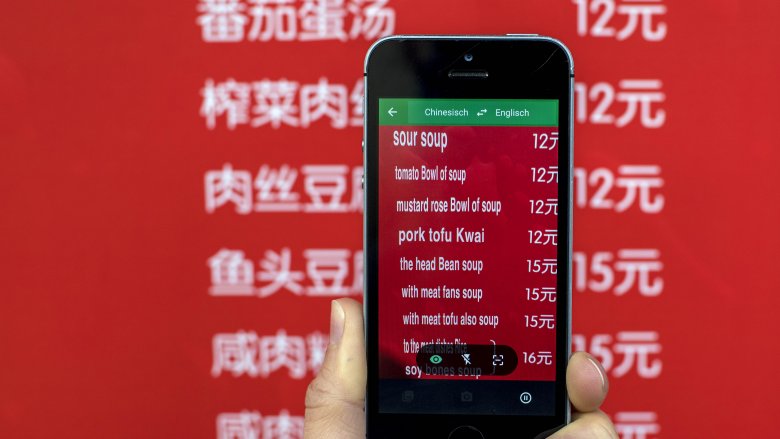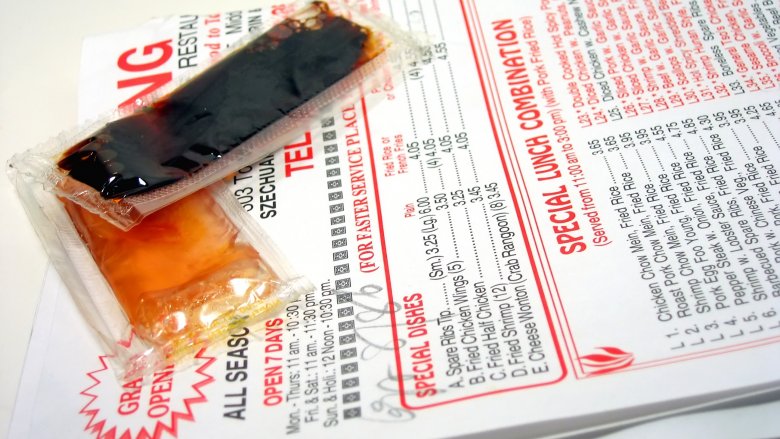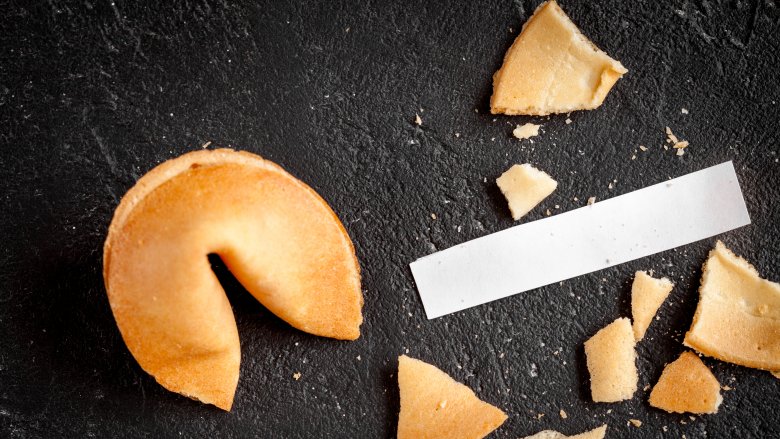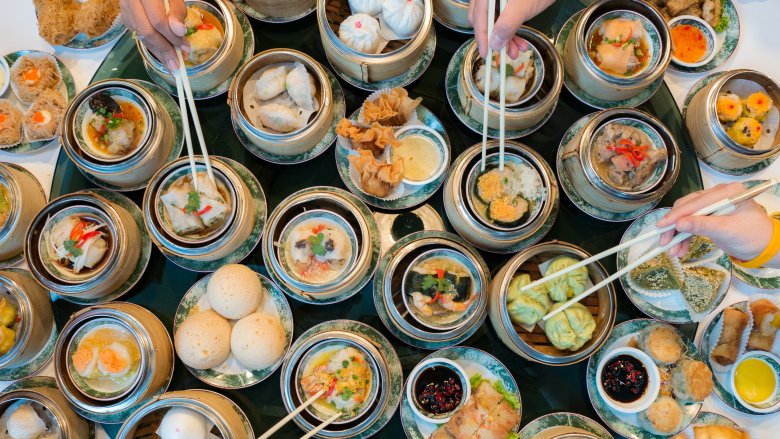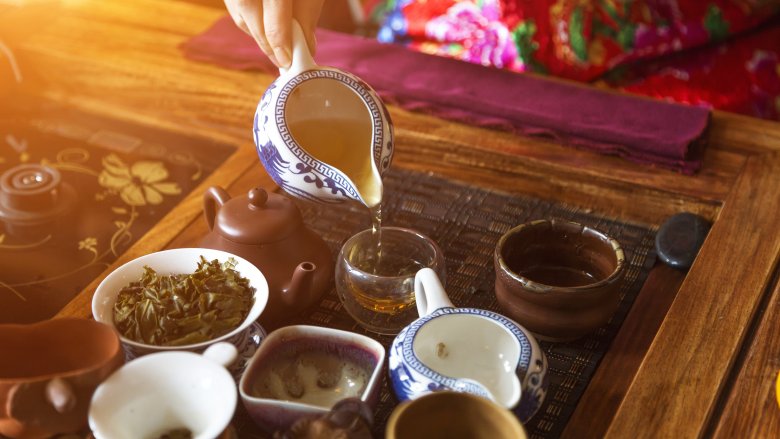Signs You're In A Good Chinese Restaurant
The spectrum of quality for Chinese restaurants is a wide one indeed. At the lower end, you've got the dives: the filthy, fast food failures that'll serve you up some sad noodles on a good day. At the higher end, however, you've got some of the best food you're likely to ever have in a restaurant: intense, unique flavors, the freshest meat and vegetables, and a vast range of incredible dishes and recipes you've never even heard of. As with most world cuisine, if you're looking for quality then you're looking for authenticity — it's fair to reason that the closer you get to China (figuratively or literally) the better the food is going to be. We can't make any promises, of course, but if the restaurant you're in hits these marks, then it's got a decent chance of sitting at the very top of that extensive spectrum.
It's in the right neighborhood
Location, location, location: that's the name of the game, here. A Chinese restaurant sitting in the middle of your city's Turkish neighbourhood isn't going to inspire confidence, and neither is one that's plonked by the side of a highway in the middle of nowhere. But if that restaurant is situated in the heart of the Chinese community, there's a fair bet the owners and staff are going to constitute a part of that community.
Certain regions in the U.S. (specifically, New York and California) have a very high concentration of Chinese immigrants, so they're a good place to start. Within your town or city, look for the residential Chinese neighborhoods and see if you can find a place nearby — that's your best bet. Beware, however, of Chinatowns: they're made to bring in tourists, and that's hardly an indicator of quality grub.
It's regional
It may sound weird, but if your Chinese restaurant is a Chinese restaurant, it's probably not going to serve the best Chinese food. China itself is made up of eight culinary regions: Cantonese, Zhejiang and Jiangsu, which are known for their light, sweet dishes; Sichuan, which does spicy food better than anyone else; Hunan, which goes for spicy and sour recipes; Anhul and Fujian, which utilize mountain ingredients in their dishes; and Shandong, which specializes in seafood.
Find a restaurant that uses one of those regional labels, and it's likely you've found a place where the chefs know what they're doing. Find one that throws all its food under a general "Chinese" umbrella and you can be far less certain of that. The added bonus of visiting a region-based restaurant, of course, is also that knowing the region well will give you a good idea of what's best to order on the menu.
The staff speak Chinese
This might seem obvious to you, but it's worth saying anyway: If the staff appear to be speaking Chinese, that's a good sign. According to Mission Chinese Food's Danny Bowien, the places where the staff use the language as their first are, more often than not, the best. It's simple logic, and similar to that of choosing the right neighborhood — who else would you trust to serve authentic, quality Chinese food than first or second generation immigrants, or immigrants who have maintained such a strong link to their homeland's culture that they continue to learn and speak the language?
There are shrines
On a similar note, be on the lookout for a shrine when you walk in. Shrines are an absolutely crucial part of Buddhist culture, and are believed to protect and aid stores and their inhabitants. Many places will have more than one, and it's possible — with a little research — to be able to recognize and identify the figures who are being revered. You might, for example, see Guan-Yu, who stands for honesty and loyalty, Tu-Di Gong, who protects the land, or Guan Yin, who offers luck in the worshipper's personal life and business.
As with language, religion is a part of life which many strive to keep alive, even after having traveled across the world to settle somewhere else. If you can see Buddhist shrines in the restaurant you're in, then it's a sure thing that the owner takes their cultural roots very seriously indeed — a reassuring thing when it comes to sitting down and grabbing a menu.
They've got a Chinese-language menu
So you've been shown to your table, sat down and have just been handed an English menu to peruse. What's the first thing you should do? Throw it away. Any Chinese restaurant worth its salt will at least cater to (if not primarily serve) a Chinese clientele, and that means there's bound to be a Chinese-language menu available. This menu, which is likely to contain some of the more out-there dishes (expect plenty of offal, feet, ears and tongues), might be tricky to get hold of without somebody who can speak a Chinese language on your team, and it's going to be downright impossible to read without one either, so make sure you have help on hand.
If you're willing to throw yourself into the challenge, however, you'll have a whole new world of Chinese food opened up to you. And if you've found a place where there isn't even an English menu available, congratulations: You've struck gold.
The English menu is badly-written
If you do opt for the English menu (and frankly, we wouldn't really blame you) remember to keep a keen eye out for how well it's written. Are there misspellings, or grammatical errors? A Chinese restaurant might be one of the few places you ever eat where those things are positives rather than negatives. As long as it's not simply negligence of spelling and grammar, it's probably fair to assume that those mistakes represent a potential language barrier between your country and the owners of the restaurant. Much like the restaurant being situated in an immigrant neighborhood or the staff speaking Chinese, this might signify that the restaurant hasn't quite become westernized or too strongly influenced by western culture. Put away your judgement and embrace the mistakes.
There aren't any fake dishes
There are some dishes out there which, at first glance, might appear Chinese, but are actually simply western inventions that have been invented to appear oriental. Examples of "Chinese" food you won't actually find in China include crab rangoon, which is an American invention, duck sauce, which is made from fruit that doesn't exist in China (hoisin is authentic, though) and egg foo yung, which was created by Chinese-American chefs. Stay away from broccoli too, which is a Western vegetable as you know it, and try to remember that fortune cookies are actually a Japanese tradition, so be wary of any Chinese restaurant that offers them.
At best, any restaurant with these dishes on the menu is trying to cater to Westerners, or, at worst, they don't really know what they're doing. Neither of those should strike you as the best place to get authentic Chinese food.
They serve dim sum
While there are a handful of Western dishes which you should keep a beady eye out for on the menu, there's one particular Chinese dish that should reassure you that you've found the right place: dim sum. For the uninitiated, dim sum is a type of bite-sized food that's usually served in baskets, often with tea as part of brunch. Dim sum dishes can include dumplings, rolls, buns and cakes (and many more), and are usually pushed around the restaurant on carts for customers to pick and choose.
According to David R. Chan, an L.A. lawyer who's eaten in over 6,000 North American Chinese restaurants, almost every single one he's ever found which served dim sum has been an authentic restaurant catering to Chinese diners. Use this as your authenticity barometer.
They mean business when it comes to tea
Similarly, you can gauge how authentic your Chinese restaurant by just how seriously they take their tea. The Chinese, of course, don't mess around when it comes to the stuff: the drinking of tea in China is a major part of their culture. It's used as part of the cuisine, is often medicinally, and has a whole load of rules, signals and customs attached to it. Tea is offered for respect, to family members, as an apology, and to celebrate or show gratitude.
The teas most commonly served in Chinese restaurants are (or should be, at least) oolong, green tea, jasmine tea and pu-erh. If the restaurant you're in makes a point of offering tea to you, or even insisting that you drink it, take that as a plus — the same goes if the other customers are drinking it. If it's not even on the menu, stay clear.
The newspaper trick
So you're sitting in the restaurant you've chosen, and you look around: they've got the dim sum out with the tea, the staff are nattering back-and-forth in Mandarin and there's not a fortune cookie in sight. All good, right? Well, if you're still not certain, give this trick a go. Most Chinese restaurants (or, at least, the proper ones) will have a few newspapers lying around that are written to cater to the Chinese community. If you can, pick one up and take a look through it — if you can find an ad for the place you're in inside the paper, you know for sure that they're trying to attract Chinese customers over anybody else.
Obviously, this is far from the only important factor here, and not all restaurants will advertise at all, but if you do find them trying to do this, you'll know for sure that you're exactly where you want to be.
